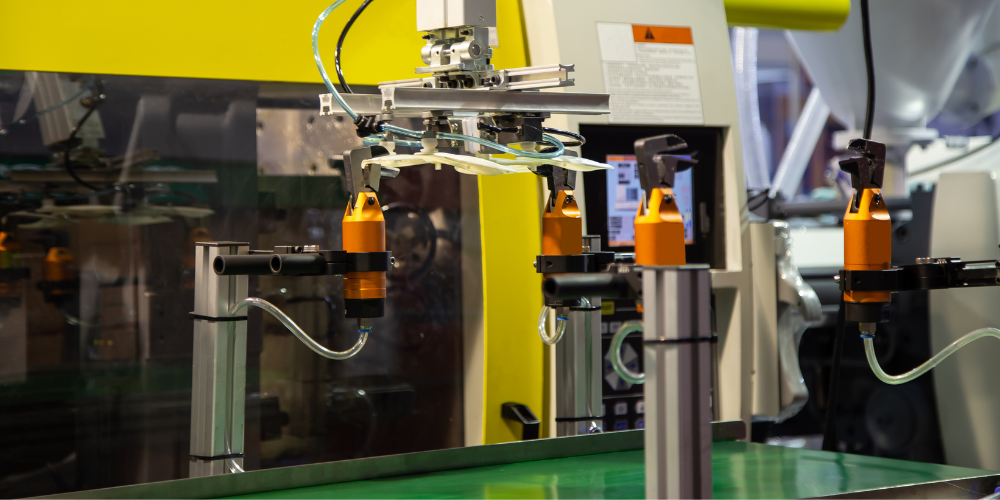Reaction Injection Molding (RIM) is a specialized type of injection molding that creates custom plastic parts or components at a lower cost and in significantly less time. RIM offers several advantages over other types of injection molding, including:
Reaction Injection Molding (RIM) is a specialized type of injection molding that creates custom plastic parts or components at a lower cost and in significantly less time. With RIM, you can create your own custom part or component in as little as 72 hours.
RIM uses the same injection molding machines as traditional injection molding. It differs in that it uses different materials and processes to create custom plastic parts or components.
RIM offers several advantages
Reaction Injection Molding (RIM) offers several advantages over other types of injection molding. Because it is a continuous process, parts are ready as soon as they exit the mold. This means that no cooling cycles are necessary and that there are no downtime periods at the end of an injection cycle. Parts made via RIM also have a high-quality surface finish and very tight tolerances.
Additionally, this type of injection molding reduces lead times and costs compared to processes like blow molding or thermoforming. Because RIM produces parts with such high quality and at such low cost, it is an ideal solution for making complex parts that need to withstand heavy usage or harsh environments
Greater design flexibility
The reaction injection molding process is a continuous process, unlike conventional injection molding. This means that there are no parts to be ejected from the mold, which enables RIM to produce complex shapes and hollow sections as well as parts with multiple cavities.
The process starts with a computer-generated model of the part being manufactured. The model is sliced into thin layers, and each layer is assigned a path through which it will travel during the injection molding process.
Improved assembly efficiencies
Reaction Injection Molding (RIM) is a continuous process, in which the materials react while they are full injected into the mold. This allows RIM to create parts with complex geometries that cannot be produced by other injection molding processes. By adjusting the rate of catalyst flow and polymerization time, it’s possible to vary the hardness of an engineered part within a range of 15 Shore A to 60 Shore D without compromising strength or stiffness.
In contrast to conventional injection molding methods, RIM produces parts requiring little-to-no assembly. Since multiple components can be combined into one during production using this technology, fewer assembly operations are required overall – saving both time and money in production costs!
Faster part production
The production lead times are reduced due to shorter cycle times. Plus, RIM is a continuous process, which means parts are ready as soon as they exit the mold.
RIM is a fast process and can take place at extremely high speeds. It can produce parts at rates up to 60 per minute with very little downtime between parts. The total cycle time of one part differs depending on part geometry, but it’s typically under two minutes; in comparison to conventional injection molding processes that take upwards of 15-20 minutes per cycle!
This increased speed enables manufacturers to use RIM for low-volume production orders as well as larger ones while still effectively reducing costs and improving quality control measures by eliminating scrap material that would otherwise be produced in other processes such as machining or casting operations where tolerances may be less consistent than those obtained through RIM manufacturing methods (for instance).
Less waste
In addition to the benefits of traditional injection molding, RIM also has a few other advantages over other types of molding. One is that unreacted material can be recycled for use in subsequent batches. This is an advantage that RIM has over other types of injection molding because it reduces the amount of waste generated by a production facility.
Another advantage is that RIM allows you to create complex molds with intricate detail, which would be difficult to achieve using conventional injection molding techniques.
Higher performance
Reaction Injection Molding (RIM) is a continuous process that produces parts with a high-quality surface finish and very tight tolerances—generally up to +/- 0.005 inches. The process yields more dimensionally accurate parts, faster setup times, and shorter cycle times than traditional metal molding methods.
The RIM process is similar to the Polymerization Injection Molding (PIM) method because both are used for processing thermoset plastics. However, PIM utilizes two different liquid resins whereas RIM uses only one liquid resin which acts as both the catalyst and polymerization initiator in the reaction chamber of an injection molding machine—hence its name "reaction injection molding.
Conclusion
RIM is a great process for manufacturers who want to produce custom parts or components quickly and at a lower cost. It can also help improve assembly efficiency by combining multiple parts into one unit, reducing the need for manual assembly operations. If you have any questions about RIM or would like more information on how this process could work in your facility, please contact us today!


